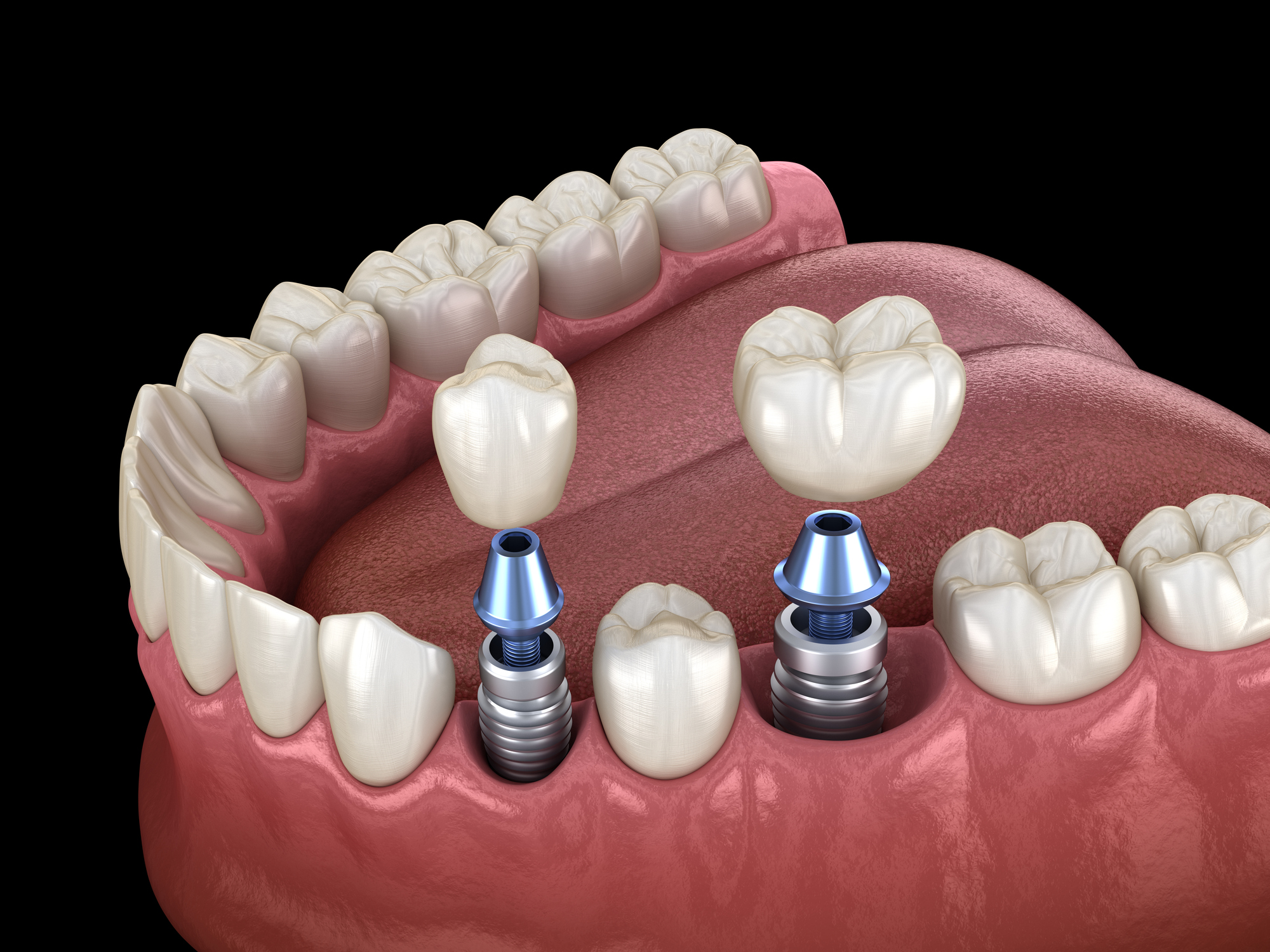The Definitive Guide to Dental Sense
Table of Contents3 Simple Techniques For Dental SenseNot known Incorrect Statements About Dental Sense 10 Simple Techniques For Dental SenseThe 9-Second Trick For Dental Sense
are medical tools surgically implanted right into the jaw to bring back a person's capacity to eat or their look. They give assistance for synthetic (phony) teeth, such as crowns, bridges, or dentures. When a tooth is lost as a result of injury or disease, a person can experience complications such as fast bone loss, defective speech, or modifications to eating patterns that lead to discomfort.Dental dental implant systems contain an oral implant body and oral implant joint and might also include a joint fixation screw. Front tooth filling. The dental implant body is operatively put in the jawbone in location of the tooth's root. The oral implant joint is usually connected to the implant body by the abutment fixation screw and expands through gums into the mouth to support the attached man-made teeth
(https://us.enrollbusiness.com/BusinessProfile/7028852/Dental%20Sense)Structure of The Oral Implant System picking dental implants, talk to your oral company concerning the prospective advantages and dangers, and whether you are a candidate for the treatment. Things to consider: Your total wellness is an essential consider establishing whether you are a good candidate for dental implants, how much time it will take to heal, and exactly how long the dental implant might remain in place.
Smoking cigarettes might affect the healing procedure and decrease the lasting success of the dental implant. The healing procedure for the dental implant body may take a number of months or longer, during which time you commonly have a short-term joint instead of the tooth. the oral implant treatment: Thoroughly follow the dental hygiene guidelines provided to you by your dental provider.
Dental Sense for Beginners
Implant failing can lead to the need for one more medical procedure to repair or replace the dental implant system. Recovers the capability to chew Restores aesthetic appearance Aids maintain the jawbone from shrinking as a result of bone loss Preserves the health of the surrounding bone and gum tissues Aids keep nearby (close-by) teeth stable Boosts quality of life Damages to bordering natural teeth during dental implant positioning Injury to the surrounding tissues throughout surgical procedure, such as sinus opening Injury throughout surgery (for instance, crack of surrounding jawbone) Inadequate function, such as seeming like the teeth do not attack together typically A feeling that the tooth is loose or twisting in position resulting from an abutment screw loosening Implant body failure (looseness of the dental implant body) because of systemic infection, which might be more probable in people with unrestrained diabetes due to local infection in bone and gum tissues supporting the implant body because of delayed healing, which may be more probable in clients who smoke Trouble cleaning up the gum tissues around the implant, resulting in inadequate oral hygiene Untreated gum disease Post-surgical numbness as a result of nerve impingement or damages Constantly notify healthcare carriers and imaging professionals that you have dental implants before any type of magnetic resonance imaging (MRI) or x-ray treatments.
FDA is not conscious of any adverse events reported for MRI or x-ray procedures with dental implants. Dental implants systems are commonly made from materials that adhere to international agreement requirements of the International Organization for Standardization (ISO) or ASTM International. These standards have details of what makes a safe material.

An oral implant is a structure that replaces a missing out on tooth. With screw-like devices, the specialist inserts an implant into the jawbone, and it functions as an anchor for a fabricated tooth, called a crown. A gadget called an abutment connects the synthetic tooth to the dental implant. The crown is tailor-made to fit the individual's mouth and match the shade of their teeth.
Unknown Facts About Dental Sense
Some people are not qualified for oral implant surgery. It is for oral cosmetic surgeons to run on people with: severe illnessuncontrollable metabolic diseasebone or soft cells illness or infectionIf these concerns are settled, an individual can have the surgery. In, oral specialists avoid operating on people with: If individuals with any of the above undergo oral implant surgical treatment, there is a higher threat of the implant stopping working.

Oral dental implant surgical procedure is a customized procedure. It's not the exact same for every person. But the adhering to offers a basic review of what you can expect your dental practitioner, oral cosmetic surgeon, periodontist or prosthodontist to do: Position the dental implant operatively. Offer you time to heal. Affix the article and final crown, bridge or denture.
Next off, your doctor will thoroughly position the oral implant right into your jaw. Your cosmetic surgeon will rearrange your gums and shut the laceration with stitches. If your implant is near the front of your mouth, your dentist will certainly make a temporary tooth for you to put on up until you recover. This way, you will not have a space in your smile while you recuperate.
9 Easy Facts About Dental Sense Explained
Your copyright can tell you what to anticipate in your circumstance. Throughout the recovery stage, your jawbone ought to fuse to the dental implant. This procedure, called osseointegration, is important for security and long-lasting success. This procedure can take anywhere from 3 to nine months. In many cases, it might take longer.
Once your implant heals, your dentist can affix the abutment (tiny adapter post) and your final repair (crown, bridge or denture). This normally takes regarding one hour to complete and may require a second small surgery. You shouldn't really feel any type of pain throughout your dental implant treatment since your supplier will certainly utilize medicine to numb your gums.